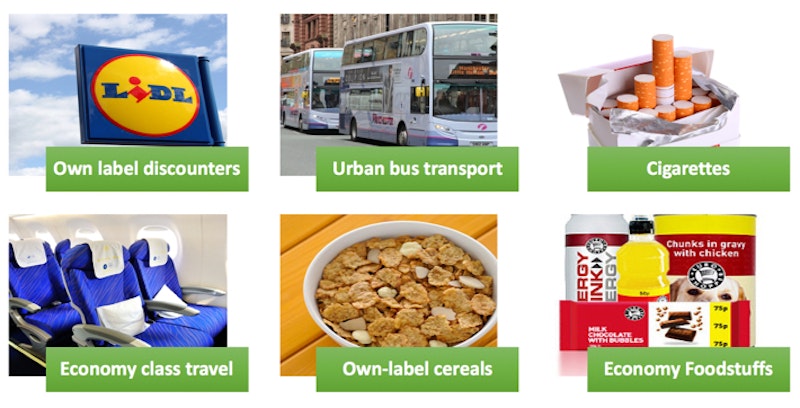Topic Videos
Inferior Goods
- Level:
- GCSE, AS, A-Level, IB
- Board:
- AQA, Edexcel, OCR, IB, Eduqas, WJEC
Last updated 7 Jan 2023
A quick primer on inferior goods where the income elasticity of demand following a change in real income will be negative.

Inferior goods are goods or services that are of lower quality or lower value compared to other goods or services in the same category. Demand for inferior goods tends to decrease as consumer income increases, because as consumers have more disposable income, they are able to afford higher quality or higher value alternatives.
Here are a few examples of inferior goods:
- Generic or store-brand products: These products are often of lower quality or lower value compared to name-brand products, and are often cheaper. As consumers' incomes increase, they may be more willing to pay a higher price for higher quality or higher value name-brand products.
- Public transportation: Public transportation is often considered an inferior good compared to private transportation such as cars or taxis. As consumers' incomes increase, they may be more able to afford the cost of owning and maintaining a private vehicle, and may switch from using public transportation to private transportation.
- Low-priced clothing: Low-priced clothing is often of lower quality or lower value compared to more expensive clothing brands. As consumers' incomes increase, they may be more willing to pay a higher price for higher quality or higher value clothing brands.
- Economy class air travel: Economy class air travel is often considered an inferior good compared to business class or first class air travel. As consumers' incomes increase, they may be more able to afford the higher prices of business class or first class air travel and may switch from economy class to a higher class of travel.
- Cheap or discount restaurants: Cheap or discount restaurants are often considered inferior to higher-priced, higher-quality restaurants. As consumers' incomes increase, they may be more willing to pay a higher price for a higher quality dining experience.
You might also like
Price elasticity of demand (Revision Presentation)
Teaching PowerPoints
Elasticity of Demand & Supply Revision Quiz
Quizzes & Activities
Cross Price Elasticity of Demand
Study Notes

Demand for cosmetic treatments falls 40% in 2016
13th February 2017
Elasticities of Demand MCQ Revision Question
Practice Exam Questions
Introduction to Economics and the Operations of Markets - take the Yes/No challenge
Quizzes & Activities
Will small scale coffee growers survive the crisis?
4th May 2020

Business Growth: Lidl's UK Profits Quadruple
17th November 2022